-
All things about Windows 8: Windows 8 Release Date, Editions, Features, Prices
Posted on August 23rd, 2012 No comments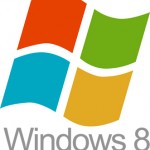 After long time of waiting and experiencing various versions, we finally welcomed the official announcement of the release and shipment availability of Windows 8. As an operating system for use on personal computers, Windows 8 could be applied to home and business desktops, laptops, tablets, and home theater PCs. It is part of the Windows NT family of operating systems and succeeds Windows 7.
After long time of waiting and experiencing various versions, we finally welcomed the official announcement of the release and shipment availability of Windows 8. As an operating system for use on personal computers, Windows 8 could be applied to home and business desktops, laptops, tablets, and home theater PCs. It is part of the Windows NT family of operating systems and succeeds Windows 7.According to the Windows Design Team, Windows 8 has been “reimagined from the chipset to the user experience,” whereas Windows 7 was intended to be a more focused, incremental upgrade to the Windows line. Windows 8 is reported to feature a new user interface based on Microsoft’s Metro design language, similar to that in Windows Phone. Also, Microsoft announced that the new OS would remove some old features of Windows OS line and add some new features. What indeed the Windows 8 would bring to the world then? Let’s just get a brief summary for Windows 8.
Release date
Windows 8 was first announced in January 2011 at Consumer Electronics Show. During its development and test phases, Microsoft released three pre-release versions: Developer Preview version (September 13, 2011), Consumer Preview version (February 29, 2012), and Release Preview version (May 31, 2012). On August 1, 2012, Windows 8 graduated from the development stage and was released to manufacturing. Windows 8 is slated for general availability on October 26, 2012.
Editions
Windows 8 is available in four major editions: Windows 8, Windows 8 Pro, Windows 8 Enterprise, and Windows RT. The first three have almost the same hardware requirements as that of Windows 7. The latter, however, runs on tablet computers with ARM architecture and has different hardware requirements. The other editions are not available in retail. The new Windows RT edition will only be available preinstalled by OEMs on ARM-based devices while the Enterprise edition will only be available through volume licensing. Hardware vendors willing to receive Microsoft’s certification for such devices need to adhere to a list of certification requirements.
Features
Metro
Based on Microsoft’s Metro design language, Metro UI is by far the biggest change in Windows 8, and can be the most confusing to use at first—especially for desktop users. The Metro environment features a new tile-based Start screen similar to that of the Windows Phone operating system. Each tile represents an application, and can display relevant information such as the number of unread messages for an e-mail application or the current temperature on a weather application. These applications run in full-screen or in docked modes, and are able to share information between each other using “contracts”. They will be available only through Windows Store. Apps in the new interface are developed with the new Windows Runtime platform using various programming languages, including C++, Visual Basic, C#, and HTML with JavaScript code-behind.The traditional desktop environment for running desktop applications is accessed via a tile on the new Start screen. The Start button has been removed from the taskbar in favor of a Start button on the new charm bar, as well as a hotspot in the bottom-left corner. Both open the new Start screen, which replaces the Start menu.
Applications developed for this new environment were previously referred to as “Metro-style apps” in development materials, connecting it to Windows 8’s use of an interface following the Metro design language as its primary desktop. However, reports surfaced that due to potential trademark issues with the German company Metro AG, Microsoft officials had begun to advise its Windows developers to stop using the term. A Microsoft spokesperson however, denied these reports and stated that the use of the term “Metro” to describe these apps was merely a codename that would be phased out. Following these reports, Microsoft started using “Modern UI Style” to refer to its tile-based interface and design language.
PowerShell 3.0
PowerShell is Microsoft’s strategic task automation platform and a core component of the overall management framework for Windows. Version 3 has been in beta for some time but the final version is included with Windows 8 (and Windows Server 2012 which has also been released to manufacturing).
Other features
* Internet Explorer 10 is included as both desktop program and as a touch-optimized app. The latter does not support plugins or ActiveX components, but includes a version of Adobe Flash Player that is optimized for touch and low power usage and works only on sites included on a whitelist.
* It is now possible to log into Windows using a Microsoft account (formerly known as a Windows Live ID). This will allow the user’s profile and settings to be synchronized over the Internet and accessible from other computers running Windows 8, as well as integration with SkyDrive.
* Windows Store will be the only method of purchasing and downloading Metro-style apps, as well as advertising desktop apps. Metro-style apps are installed from the Windows Store, or in the form of a Line Of Business app on devices joined in a network domain.
* Two new authentication methods have been added: picture password, which allows users to log in by drawing three gestures in different places on a picture, and PIN log in, which allows users to authenticate using a four digit pin.
* File Explorer will include a ribbon toolbar, and have its file operation progress dialog updated to provide more detailed statistics, the ability to pause file transfers, and improvements in the ability to manage conflicts when copying files.
* Hybrid Boot will use hibernation technology to allow faster startup times by saving the Windows core’s memory to the hard disk and reloading it upon boot.
* Windows To Go will allow Windows 8 Enterprise to boot and run from a bootable USB device (such as a flash drive).
* Two new recovery functions are included, Refresh and Reset. Refresh restores all Windows files to their original state while keeping settings, files, and apps, while reset takes the computer back to factory default condition.
* USB 3.0 is now supported natively.
* A new lock screen displays a clock and notifications while the computer is locked.
* Task Manager has been redesigned.
* Xbox Live integration (including Xbox Live Arcade, Xbox SmartGlass, Xbox Music, and Xbox Video).
* Storage Spaces will allow users to combine different sized hard disks into virtual drives and specify mirroring, parity, or no redundancy on a folder-by-folder basis.
* Family Safety is intended to allow parents to protect their children on the Internet, as well as monitor and control their PC and Internet activities and usage.
* Windows Defender now has anti-virus capabilities, similar to those of Microsoft Security Essentials. It is intended to replace the Security Essentials package and function as the default anti-virus program.
Price
Microsoft recently started accepting registrations for Windows 8 upgrades. Those who purchased a PC any time after June 2 can now sign up to receive the Windows 8 upgrade for $14.99 when the OS is released on Oct. 26.
Back in May, Microsoft announced that anyone who purchased a Windows 7 PC between June 2, 2012 and Jan. 31, 2013 could upgrade to Windows 8 Pro for $14.99. Registration for that offer is now live via windowsupgradeoffer.com for PC users in 140 countries. On Oct. 26, Microsoft will start sending out promo codes via email. When you upgrade via Windows.com, Microsoft will display the $39.99 price for general upgrades; enter the promo code on the confirmation page to get the $14.99 price. The promo code will expire until Feb. 28, 2013.
Those who bought a PC before June 2 or have an older Windows 7 PC they’d like to upgrade can get Windows 8 Pro for $39.99 via Windows.com starting Oct. 26. There are also reports that standalone copies of Windows 8 will cost $69.99 at launch, a price that will jump to $199 after Jan. 31, 2013.
After selecting your country, Microsoft will ask you to register your personal details and information about your new PC, including date of purchase, retailer, and PC brand and model. You’ll also need your 25-digit Windows 7 product key.
займ на карту rusbankinfo.ru
-
Microsoft Windows 8 Surface tablet vs. Apple iPad – 6 points to challenge the dominance of iPad
Posted on June 25th, 2012 No commentsOn the Los Angeles event a week ago, Microsoft released the Windows 8 Surface tablet PC, which is their first tablet and operates on the upcoming Windows 8 operating system. Microsoft spent a lot of time introducing the wonderful features of Surface tablet PC, which actually includes two versions. Even though there’ve been many Windows tablets in the market to compete with Apple’s iPads, Surface is the first tablet from Microsoft to full exploit the capabilities of its own new Windows 8 operating system. This also means Microsoft is officially taking part in the tablet market to compete with Apple iPads to take a share of spoils. But, can Microsoft’s strategy with the Surface, and all Windows 8 tablets, for that matter, succeed in not just being a No. 2 to the iPad, but in being a true iPad rival? If Microsoft is going to take on Apple in the tablet wars, the following key questions should be ironed out and improved to win the competition.
 Keyboard/touch-pad productivity: On the Surface event, Steve Ballmer spent a large amount of time on the Touch Cover and Type Cover. These are innovative Smart Cover-like accessories that have a soft or physical keyboard and, in the case of the Type Cover, a touch pad bonded to one side. On the contrast, the iPad can support a wide variety of Bluetooth keyboards and cases like the similar Ultrathin Keyboard Cover, but no touch pad or mouse. That hampers the iPad’s utility as a true laptop replacement, but would Microsoft’s product make for a vastly improved experience? There’s a big difference between a good keyboard and touch pad and a bad one. As the Surface tablets are still on the way, we have to wait and see this.
Keyboard/touch-pad productivity: On the Surface event, Steve Ballmer spent a large amount of time on the Touch Cover and Type Cover. These are innovative Smart Cover-like accessories that have a soft or physical keyboard and, in the case of the Type Cover, a touch pad bonded to one side. On the contrast, the iPad can support a wide variety of Bluetooth keyboards and cases like the similar Ultrathin Keyboard Cover, but no touch pad or mouse. That hampers the iPad’s utility as a true laptop replacement, but would Microsoft’s product make for a vastly improved experience? There’s a big difference between a good keyboard and touch pad and a bad one. As the Surface tablets are still on the way, we have to wait and see this.The screen: The RT version Windows 8 Surface tablet PC support 720P while the Windows 8 Surface Pro version tablets could play 1080p, with various video formats supported. This makes it quite easily for users to watch HD videos on Surface, like to watch AVCHD videos on Surface. But compared to the third-gen iPad, which has a far crisper Retina Display, Surface is still inferior to the new iPad, although the iPad 2 has a 720p-level screen as well. Not even to say the excellent video experience provided by Apple for users to watch HD videos on new iPad, which has been iPad’s strong point since it’s introduced. So, the screen of Surface is another option for Microsoft to improve.
Apps: Quite obviously, Apple iPads get more scores on apps. Apple’s App Store gives access to the latest iPhone, iPod Touch, and iPad app, a catalog that leads the tablet pack. There’re also a number of iPad-optimized Web sites and Web apps for iPads. While the Windows RT version Surface only run Metro apps and the Windows 8 tablets run older Windows applications as well. Microsoft has to build a convincing catalog of apps for RT and ensure the smooth going of updated older apps on newer touch-driven software.
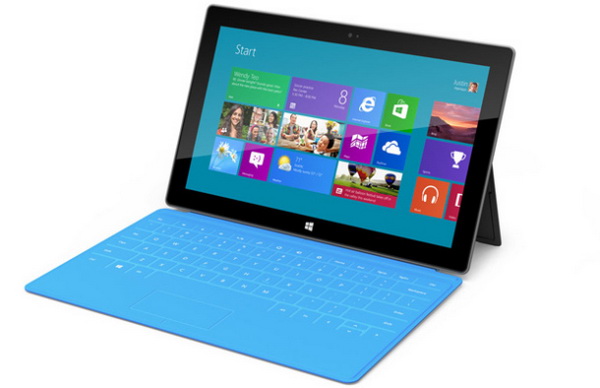 OS: Apple’s iPads run iOS while MacBooks run OS X, and the two approach each other without meeting or sharing apps. The disadvantage is that an iPad can’t be a true Mac replacement. Windows 8 tablets are full-fledged computers capable of running both tablet apps and full computer applications. It remains to be seen whether Microsoft is ahead of the game or muddying the waters. Meanwhile, the Surface RT only runs apps, like the iPad.
OS: Apple’s iPads run iOS while MacBooks run OS X, and the two approach each other without meeting or sharing apps. The disadvantage is that an iPad can’t be a true Mac replacement. Windows 8 tablets are full-fledged computers capable of running both tablet apps and full computer applications. It remains to be seen whether Microsoft is ahead of the game or muddying the waters. Meanwhile, the Surface RT only runs apps, like the iPad.Consumer/Pro split: Apple’s been successful at making one line of iPads, which differ from 4G and storage. Microsoft’s twin set of tablets — one with beefier specs and full Windows compatibility, the other more like an iPad — could fracture the decision-making process. Apple has MacBook Pros at higher prices and with more capabilities, but all MacBooks run the same type of OS; they don’t split it like the Surface does. Could this be better than Apple iPad?
Price:The stable price has also been a great reason of iPads’ popularity. To compete with Apple iPad, the Windows Surface tablet needs to be affordable, and cheaper than an iPad, or better for the same price, if that can be accomplished.
займ на карту rusbankinfo.ru
-
Preview of Windows Phone 8 features before Windows Phone Developers Conference
Posted on June 20th, 2012 No commentsMicrosoft has just released its first tablet PC Surface days ago on the June 18th event. With the approaching of Windows Phone Developer’s Conference on Wednesday in San Francisco, what will Microsoft bring to us? Will we see the official release of Windows Phone 8? Well, even though Microsoft has been mute on the conference plan, it is for sure that the company will launch the Windows Phone 8 operating system. Riding a wave of momentum generated by the Surface tablet unveiled on Monday, Microsoft will be outlining plans for Windows Phone 8 on Wednesday as part of the company’s push to take on Apple and Google in the mobile market. Now, the concerns about Windows Phone 8 in fact should be what features of Windows Phone 8 will be introduced by Microsoft on the conference, but not whether it would be launched or not. The latest report from WPCentral’s Daniel Rubino has unveiled some exclusive information about Windows Phone 8 features, including consolidating Skype greatly, built-in Nokia maps, Windows Phone wallet, and more native codes for developers, etc. Check the following content to get the most possible features of Windows Phone 8 might include.
Upgrade apps on Windows Phone 7: Not long before, some Microsoft stuff said all Windows Phone could be upgraded to Windows Phone 8 Apollo. But Microsoft cleared the rumors by claiming that the “upgrade” in fact means all apps on the existing Windows Phone 7 could be used on the new OS. It’s believed that Microsoft would give a satisfactory answer on whether other existing Windows Phones could be upgraded to Windows Phone 8 or not.
Screen resolution: Screen resolution has been also a big concern on Windows Phone 8, as it could determine whether users could watch 720P video on Windows Phone 8 or enjoy 1080P videos on Windows Phone 8, just like the new iPad. The latest news from Daniel Rubino said that the new OS supports only 480×800, 768×1280 and 720×1280 screen resolutions.
New UI: Will Windows Phone 8 user interface be the same as that of Windows Phone 7? Quite probably. Of course, there must be some differences.
More native codes for developers: Just as leaked before, Daniel Rubino mentioned that the Windows Phone 8 would provide developers with more native codes, to enable developers develop more powerful and practical apps, and make it convenient for developers to transfer apps from iOS and Android to Windows Phones.
Consolidate Skype and VOIP: It’s very possible that Microsoft would talk about how to deep consolidate Windows Phone 8 OS with Skype and third-party app VOIP.
Combine Nokia maps: The cooperation between Microsoft and Nokia includes not only cell phones, but also background services. There’s great possibility of Windows Phone 8 OS combining Nokia Maps.
Windows 8 core: One reason making Windows Phone 8 attractive is that it’s rumored it would adopt Windows NT core, which is the fundamental core of Windows 8.
Apart from the above features, Daniel Rubino also predicted that Windows Phone 8 would add memory expansion function, NFC function and realize encoding on native BitLocker and security booting (business users), etc.
All anticipations are really wonderful, but we still need to wait for the official release of Windows Phone 8. Wait and see what features Daniel Rubino got.
займ на карту rusbankinfo.ru
-
Microsoft announces its Windows 8 Surface tablet PC in both RT and Pro versions for different needs
Posted on June 19th, 2012 No commentsEven though Microsoft has been releasing several wonderful hardware gadgets that received great popularity in the world, it has been mostly considered as a software giant in the electronic communication industry. Microsoft just released the Windows 8 Release Preview version as the final test before the official release of Windows 8, which would be released soon. At the event in Los Angeles, Microsoft CEO Steve Ballmer was on hand to unveil yet another Microsoft foray into the hardware world, but this time is producing an actual PC for the first time in its history, a new tablet PC for Windows 8 operating system. After a brief review of its hardware development history, Ballmer announced the new Microsoft Surface tablet PC, which is claimed to be designed to fully exploit the capabilities of its new Windows 8 operating system.
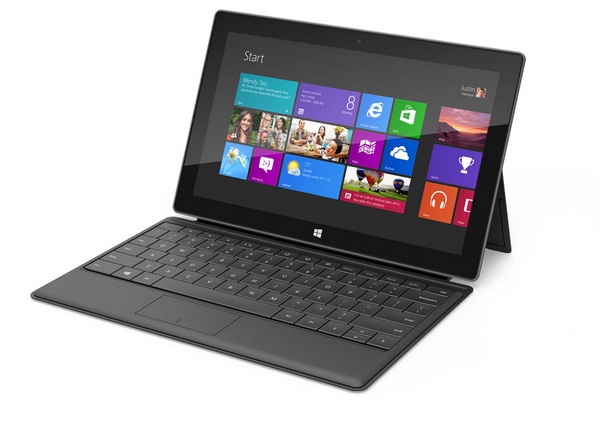 Actually, this new Microsoft Windows 8 tablet PC includes two versions. A thinner and lighter (9.3 mm thick, 1.5-pound) consumer version (commonly named RT version) that runs the Windows RT operating system (a version of Windows 8 that runs on ARM processors) support standard Microsoft Office desktop apps; instead, it runs a limited functionality version of Office called “Office Home & Student” as well as Windows Explorer, with USB 2.0 support. Take a look at the following content to get to know the RT Version Windows 8 Surface Tablet PC specs:
Actually, this new Microsoft Windows 8 tablet PC includes two versions. A thinner and lighter (9.3 mm thick, 1.5-pound) consumer version (commonly named RT version) that runs the Windows RT operating system (a version of Windows 8 that runs on ARM processors) support standard Microsoft Office desktop apps; instead, it runs a limited functionality version of Office called “Office Home & Student” as well as Windows Explorer, with USB 2.0 support. Take a look at the following content to get to know the RT Version Windows 8 Surface Tablet PC specs:Windows 8 Surface Tablet PC RT Version Specs
676 grams
9.3 millimeters thick
10.6-inch ClearType HD Display
31.5 watt-hour battery
microSD, USB 2.0, Micro HD Video, 2×2 MIMO antennae
Office Home & Student 2013 RT, Touch Cover, Type Cover
VaporMg Case & Stand
Configurable for 32 GB, 64 GBWhile the other one is a larger Pro version (13.5 mm thick, 1.9 pounds) running the Windows 8 Pro OS, which is prepared for business users. The Pro version adopts an Intel Core i5 Ivy Bridge processor, and runs all the standard Windows desktop software like Word and Excel, as well as the Metro apps. It can even run Photoshop and supports USB 3.0. The specs of Windows 8 Surface Tablet PC Pro version are displayed bellow:
Windows 8 Surface Tablet PC Pro version Specs
903 grams
13.5 millimeters thick
10.6-inch ClearType Full HD Display
42 watt-hour battery
microSDXC, USB 3.0, Mini DisplayPort Video, 2×2 MIMO antennae
Touch Cover, Type Cover, Pen with Palm Block
VaporMg Case & Stand
Configurable for 64 GB, 128 GBThe Surface’s optically bonded 10.6-inch display is notable. Microsoft describes it as “permanent scratch and wear resistant,” and says that it minimizes glare, which makes it perfect for reading. Meanwhile, you can freely watch 1080P HD videos on Surface freely as its HD 1080P screen resolution produces quite excellent HD video experience for you. It could also output full high-resolution video to a TV via the DisplayPort included.
It is unclear what company is manufacturing the tablet for Microsoft, though the product itself looks to be a branded device with prominent Windows logos adorning the screen bezel and the back kick-stand. The debut of the ARM-based Windows RT version of Surface is set to coincide with the launch of Windows 8 and will be available in 32GB and 64GB flavors. Pricing will be in-line with competing ARM tablets. The Intel Ivy Bridge i5-based Windows Pro Surface is slated to follow about three months later and will be sold in 64GB and 128GB capacities with prices comparable to Ultrabook PCs.
займ на карту rusbankinfo.ru
-
Windows 8 Release Preview available online for free download in 14 languages
Posted on May 31st, 2012 No commentsWe have been waiting for the next Windows OS for a long time. With all rumors and speculations going and the approaching of the official release of Windows 8 operation system, Microsoft debuted Windows 8 Release Preview version this Thursday, which might be the last step before a final release of Windows 8 this fall. The debut of the Release Preview version is several days earlier than expected, which was promised to be the first week of June by Microsoft. The freshly released Windows 8 Release Preview is available in two versions for both 32-bit and 64-bit systems. Though the Windows 8 Release Preview has been debuted, Microsoft has not yet announced a launch date for Windows 8 or prices for the OS. Analysts expect the revamped Windows to debut in October and at prices identical to Windows 7. Now, the Windows 8 Release Preview is available online for free download in 14 languages, thus you can have the choice to select and download the one in your familiar language.
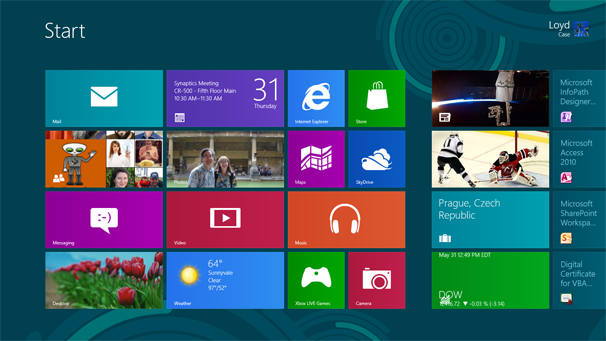 What’s new or improved in Windows 8 Release Preview version:
What’s new or improved in Windows 8 Release Preview version:
New Bing-powered apps, including ones for travel, news, and sports
Improvements to Mail, Photos, and People apps
Increased Start personalization
Better multiple-monitor support
Better Windows Store navigation
New family safety and security functionality
Enhanced touch support for Internet Explorer 10How to download and install Windows 8 Release Preview
Go to the Windows 8 Release Preview download page to enter your email and country region, check the agreement box, and then click the button to download Windows 8 Release Preview version.Running this application automates most of the set-up process, and selects the appropriate version of the preview for your machine. These must be turned into installation media that are burned to a DVD drive or copied to a USB flash drive in order to complete the install. That’s the installation process in a nutshell. As this is preview software, so keep mission critical work off your test PC.
Requirements of installing Windows 8 Release Preview
1. Microsoft advises users to not install the operating system on a computer used for day-to-day work, as there’s also no going back without wiping your hard drive.2. You can’t downgrade from Windows 8 since it cannot access the recovery partition of your hard drive. If you need to downgrade, ensure you have recovery disks readily available.
3. You can upgrade to the Release Preview if you are already running Windows 8 Consumer Preview or Developer Preview. But you cannot keep any of your files.
4. A processor with a clock speed of 1GHz or greater, 1GB (32-bit version), or 2GB (64-bit version) of RAM, at least 16GB (32-bit) or 20GB (64-bit) of available hard drive space, and a graphics card that supports DirectX 9 with a WDDM driver are required to run Windows 8 Release Preview on your test computer.
Other features for your selection include: multitouch support, Internet access, and a screen resolution of at least 1024 pixels by 768 pixels, etc.
займ на карту rusbankinfo.ru
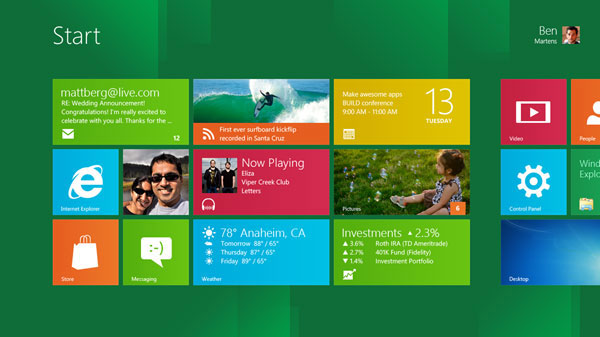
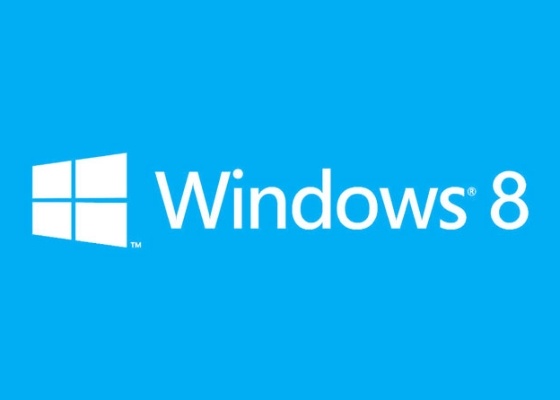
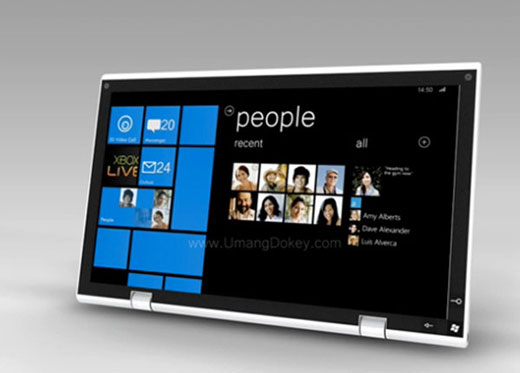
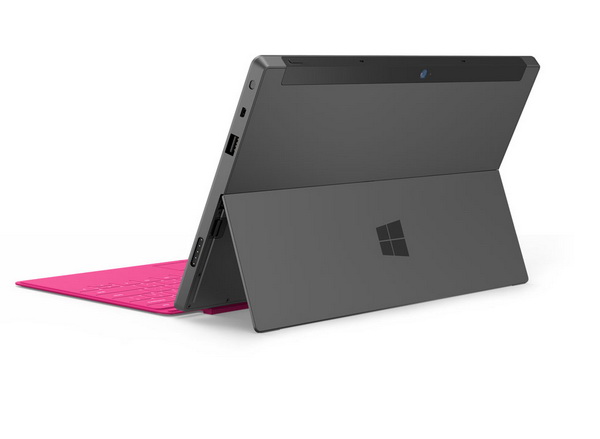





Recent Comments